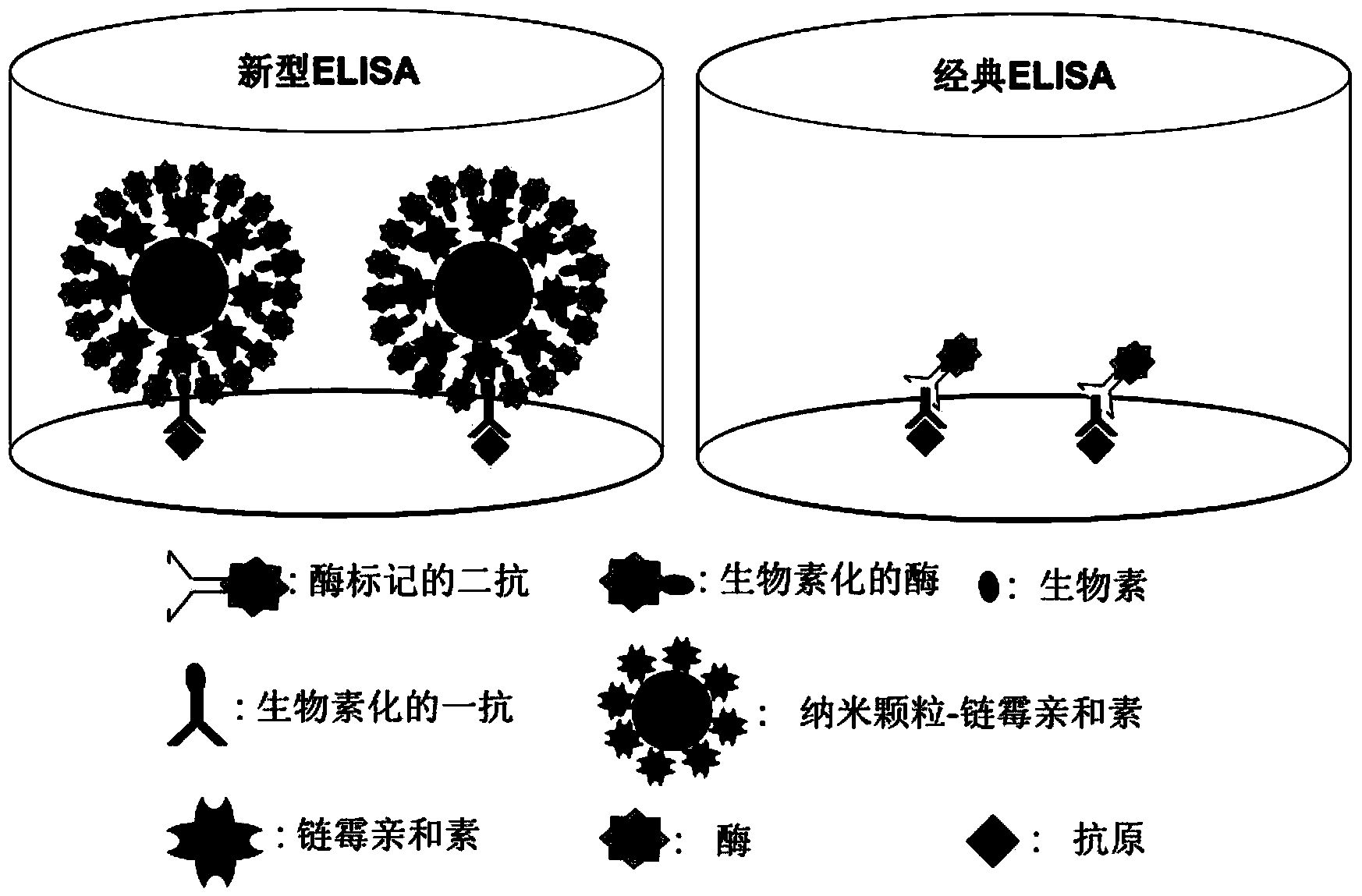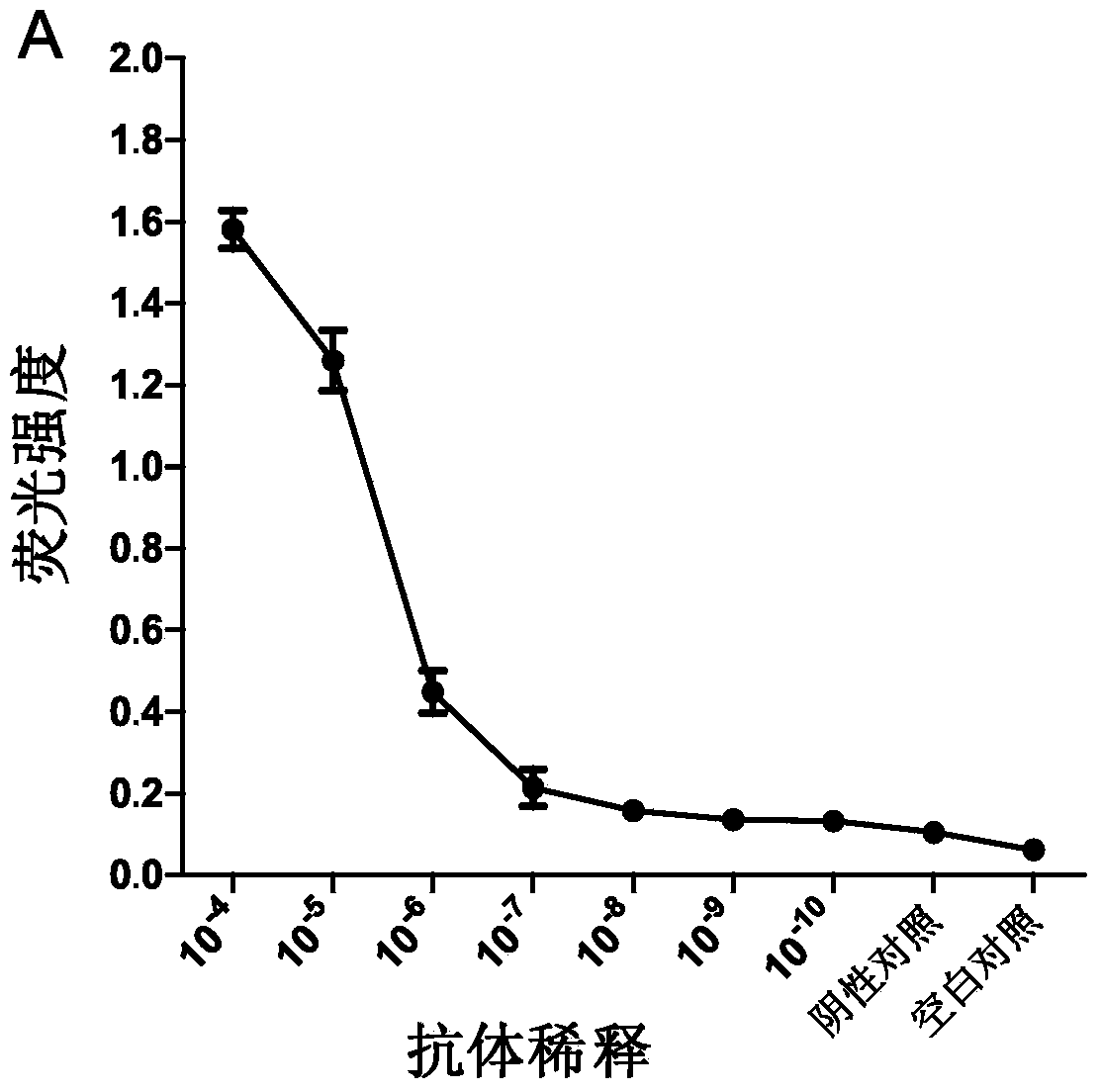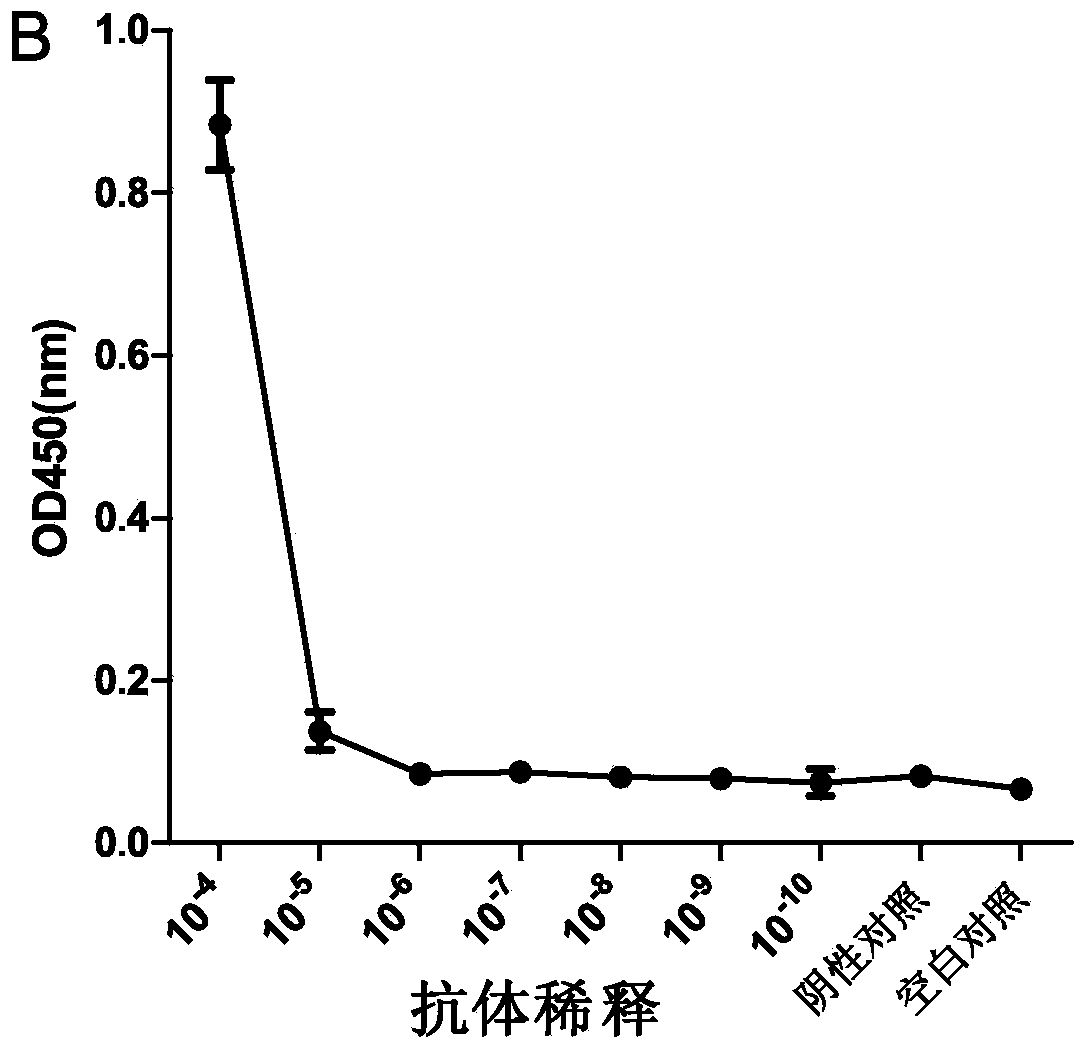Establishment of novel ultrasensitiveness ELISA method
A test method, enzyme-linked immunosorbent adsorption technology, applied in measuring devices, instruments, fluorescence/phosphorescence, etc., can solve the problems of limiting the sensitivity of ELISA methods and failing to reach the sensitivity of chromogenic substrates, so as to improve sensitivity and increase Effect of Fluorescence Yield
- Summary
- Abstract
- Description
- Claims
- Application Information
AI Technical Summary
Problems solved by technology
Method used
Image
Examples
Embodiment 1
[0032] Example 1 Using the novel ELISA method of the present invention to detect anti-HIV-1gp120 monoclonal antibody
[0033] Experimental steps:
[0034] 1. Coating of ELISA plates.
[0035] 1. Dilute HIV-1gp120 with coating solution (carbonate buffer, pH 9.6) to 2 μg / mL, and add to the wells of the ELISA plate, 100 μL / well. Placed at 4°C for 18h.
[0036] 2. At room temperature, shake off the solution in the well and pat dry. Add PBS containing 2‰ (volume) Tween-20, 250 μL / well, shake on a horizontal shaker for 5 minutes, shake off the washing solution in the well, and pat dry. Repeat the wash 5 times.
[0037] 3. Add 200 μL / well of PBS containing 5% (mass volume ratio) skimmed milk powder, and place at 37°C for 4 hours.
[0038] 4. At room temperature, shake off the solution in the well and pat dry. Add PBS containing 2‰ (volume) Tween-20, 250 μL / well, shake on a horizontal shaker for 5 minutes, shake off the washing solution in the well, and pat dry. Repeat the wa...
Embodiment 2
[0051] Example 2 Detection of anti-HIV-1gp120 monoclonal antibody using classic ELISA method
[0052] Under the same experimental conditions as in Example 1, biotinylated HRP (use concentration 2.5×10 -5 mg / ml) instead of biotinylated TurboNuclease, use TMB chromogenic substrate (use concentration 0.05g / L) instead of fluorescent substrate, use streptavidin without gold nanoparticles (use concentration 5×10 -4 mg / ml) instead of 40nm gold nanoparticles-streptavidin, the sensitivity detection of the classic ELISA method was performed according to the steps described in Example 1.
[0053] The test results are shown in Figure 2(B). The average value of the negative control is 0.082±0.001, so when the OD value > 0.17, the dilution is positive, and when the OD value is ≤ 0.17, the dilution is negative. The results of this experiment Medium 10 4 The OD value of double dilution was 0.884, which was positive; 10 5 The OD value of double dilution was 0.138, which was negative. There...
Embodiment 3
[0054] Example 3 Detection of anti-HIV-1 gp120 monoclonal antibody using a novel ELISA method without gold nanoparticles
[0055] Under the same experimental conditions as in Example 1, streptavidin without gold nanoparticles (using a concentration of 5×10 -4 mg / ml) instead of 40nm gold nanoparticles-streptavidin, the sensitivity detection of the new ELISA method without using gold nanoparticles was carried out according to the steps described in Example 1.
[0056] The test results are shown in Figure 2(C). The average value of the negative control is 0.103±0.001, so when the fluorescence value > 0.22, the dilution is positive, and when the fluorescence value is ≤ 0.22, the dilution is negative. The results of this experiment Medium 10 5 The fluorescence value of double dilution is 0.625, which is positive; 10 6 The fluorescence value of double dilution is 0.20, which is negative, so the sensitivity of the novel ELISA method using the TurboNuclease enzyme of the present inv...
PUM
| Property | Measurement | Unit |
|---|---|---|
| absorption wavelength | aaaaa | aaaaa |
Abstract
Description
Claims
Application Information
 Login to View More
Login to View More - R&D
- Intellectual Property
- Life Sciences
- Materials
- Tech Scout
- Unparalleled Data Quality
- Higher Quality Content
- 60% Fewer Hallucinations
Browse by: Latest US Patents, China's latest patents, Technical Efficacy Thesaurus, Application Domain, Technology Topic, Popular Technical Reports.
© 2025 PatSnap. All rights reserved.Legal|Privacy policy|Modern Slavery Act Transparency Statement|Sitemap|About US| Contact US: help@patsnap.com



